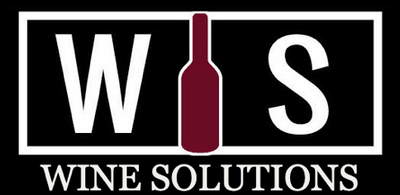Monastero Trappiste di Vitorchiano 'Coenobium' Bianco Lazio IGT 2021
Lazio Skin Contact White
Regular price
$25.49
Sale price
$29.99
2021 'Coenobium' Bianco Lazio IGT
Monastero Suore Cistercensi
The Coenobium (pronounced 'see-no-be-um') has an approximate annual production of 1,200 cases, about 80% of which is shipped through us to satisfy the US market. Its intrigue comes from the volcanic soils that underlay the vineyards and the longer than usual contact that the fermenting juice has with the skins…this being a vinification technique encouraged by Bea.
Rosenthal tasting notes on this wines: Produced in an entirely natural manner under the guidance of Giampiero Bea, the Coenobium is a blend of Trebbiano, Verdicchio, and Malvasia, harvested together and co-fermented without added yeasts or temperature stabilization. Aged on its fine lees in steel and fiberglass tanks, it is bottled just before the next harvest without fining or filtering. The nose is evocative of autumn on multiple sensory levels, with aromas of fennel fronds, chamomile tea, almonds, and tangerine that lead into a full but delicately rendered palate. Vitorchiano’s volcanic soils come through with a somber smoke-iron interplay, and glowing acidity lets the savory flavors coat the mouth, yet the overall impression is one of freshness and drinkability.
THE 2018 (not the 2021 here) 91 points Jamie Goode
Trebbiano, Malvasia, Verdicchio from Lazio’s volcanic soils were native fermented, and with one week of skin contact before a short rest and being bottled with minimal sulphur. Almond, chamomile, Asian pear rides a gentle, slender palate, washed with salinity and finishing with a lingering elderflower. Open this in advance and let it stretch a bit; best not briskly chilled. 91/100
- Grapes: Trebbiano (45%), Malvasia (35%), Verdicchio (20%)
- ABV: 12%
- Terroir: From 5 ha of gently sloping parcels of volcanic soils surrounding the commune of Vitorchiano
- Vines: Trained in Cordon, oldest vines date to 1963 with yields controlled through severe winter pruning, de-budding, and green harvesting, yields average 45 hl/ha
- Fermentation: Destemmed, wine ferments spontaneously in stainless-steel and fiberglass tanks
- Pressing: Hyrdaulic press, press wine blended after malolactic
- Time on Lees: Wine remains on lees until assemblage prior to bottling
- Malolactic: Spontaneous, in tank following alcoholic fermentation
- Élevage: 12 months in stainless-steel and fiberglass tanks
- Fining and Filtration: Unfined, plate filtered if necessary
- Sulfur: Applied at harvest and at bottling, with 80-90 mg/l total sulfur (normal amounts)
Full Technical Details
Viticulture:
- Farming: Certified organic by the Associazione Suolo e Salute since 1993
- Treatments: Copper-sulfate only
- Ploughing: Annual ploughing to maintain vineyard health
- Soils: Volcanic
- Vines: Trained in Cordon, oldest vines date to 1963.
- Yields: Controlled through severe winter pruning, debud- ding, and green harvesting
- Harvest: Entirely manual, usually late September
- Fermentation: Following total destemming, wines ferment spontaneously in stainless-steel and fiberglass tanks
- Extraction: Wines see pumpovers during fermentation.
- Chaptalization and Acidification: None
- Pressing: Hyrdaulic press
- Malolactic Fermentation: Spontaneous, in tank following alcoholic fermentation
- Élevage: 12 months in stainless-steel and fiberglass tanks
- Lees: Wines remain on their lees until assemblage prior to bottling.
- Fining and Filtration: Unfined, plate filtered if necessary
- Sulfur: Applied at harvest and at bottling, with 80-90 mg/l total sulfur
Even the labels look like Paolo Bea labels, but these wines are all made by the nuns at Monastero Suore Cistercensi with refined techniques thanks to Paolo Bea's influence of his son over the years to bring these wines up to the potential that they now possess. Bea wines are hard enough to get your hands on, and very expensive in most cases. These wines are very reasonable, especially for the high quality and rarity that they represent. Winemaking is hands-off so as to only express site via the grapes. Sustainable farming in volcanic alluvial soils, entirely hand-harvested, fermented spontaneously with only native yeasts, and finally bottled without fining or filtration.
One of their former importers says it best: Since the early 1990s, the nuns of Monastero Suore Cistercensi have organically farmed five hectares of vines in Vitorchiano, about ninety minutes north of Rome in the Lazio district. In the early 2000s, with the assistance of Giampiero Bea, son of the legendary Umbrian winemaker Paolo Bea, the sisters began to hone their craft and find a much larger audience for their unique wines, all while maintaining an exceptionally low-tech, hands-off approach to winemaking. Their harvests are only done by hand (with all 70 nuns at the convent sharing in the labor), and the fermentations are always spontaneous. They use only estate fruit, working mostly with Malvasia, Trebbiano, and Verdicchio — all grown on volcanic soils.

